The very first question we get … what does it cost to go cruising. Everyone, including me originally, is looking for real numbers on costs for cruising. Hard numbers are impossible because every cruiser is different, but I’ve included some hard numbers that can serve as a guide to help you put together your own “what’s it going to cost” budget.
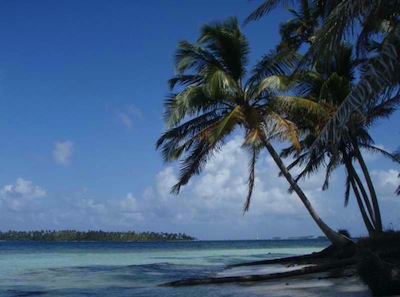
When we were trying to determine what our costs would be before we bought the boat, I was beyond frustrated because no one published hard numbers. After being a commuter cruiser for over 12 years, now I know why! It’s impossible, just like it’s impossible for me to tell you what boat to buy. Everyone’s cruising style is different. While I can’t tell you if your cruising costs will be $500 a month or $3,000 a month, hopefully once you review this information, you can put together a good estimate based on your own lifestyle!
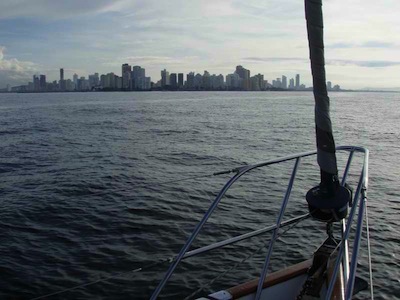
1. Commuter Cruising by default is going to cost more than selling everything and going cruising. Most, although not all, commuter cruisers keep and maintain a house or property “back home” wherever that might be. In order to figure your annual budget, first you have to leave in place the fixed costs of home ownership. Be sure to subtract anything you might not need during the months you are gone cruising … for us, we put satellite TV on vacation, our cell phones on vacation if we’ll be out of the country, trash and newspaper are cancelled until we return, the heat is turned down to 55 degrees, etc. While it’s not a huge amount, we save roughly $450 a month by going through the hassle to shut down any non-essential services for the house. Over our six months, we reduce expenses by just under $3,000. Some even go as far as changing insurance on their vehicles if they’re going to be in storage, etc. We didn’t find a huge difference in cost, so we don’t bother with vehicle insurance.
Quick Summary Here’s a quick summary, more detailed budget information below. We cruise for 6 months at a time, so these numbers are for 6 months cruising and keeping the boat in a marina the other 6 months. Can you do it for less? Of course. Can you do it for more? Yep. Our numbers are probably mid-range for a 1985 37 foot Passport. Keep in mind, it’s only a summary, you need to go through the worksheet and make out your own budget based on your own lifestyle! Also, since you have to eat and generally have entertainment whether you’re at home or aboard, those are not strictly boat expenses, so I left them out of the summary. The summary is primarily to see how much you add to your normal budget when you go cruising for six months.
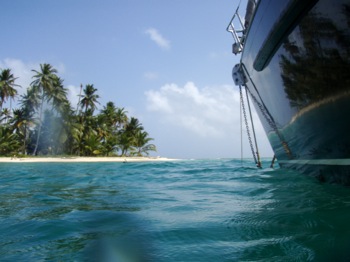
Boat: Paid For
Boat Annual Maintenance: $4,000 – $8,000
Marinas: $1,200 – $6,000 yr
Insurance: $2,400 yr
Travel to/from Boat: $500 – $2,400 yr for 2
Check In/Check Out: $200
Misc: $1,000
Total: $9,500 – $20,000
2. The Boat ... some years it feels like the old adage that a boat is a hole in the water to throw money is spot on. Other years we seem to get away relatively intact. Over the years, we’ve calculated that we seem to spend approximately 10% of the boat’s initial purchase price on maintenance and upgrades. Obviously if you choose not to fix every little thing as it breaks, you can probably get away with less. If you do all your own work, not paying “professionals”, you’re costs will be significantly less. Other than boat maintenance and upgrades, the big expense categories are:
A. Marina Fees — this is a huge expense, mostly if you’re cruising in the USA. Our marina fees have ranged from $150 a month in the Rio Dulce, Guatemala to $500 a month in Shelter Bay Marina, Ft Sherman, Panama, in the water. On the hard fees generally are about 2/3 of what the in the water fees might be. While we’re in the USA, our marina fees average $500 a month and that’s on a 12 month contract because it goes up drastically with a lesser commitment. During the six months we’re cruising, we generally have no marina fees (except this last year in the US for the refit) because we anchor out most of the time. So during a cruising year that we stayed in the Rio Dulce for hurricane season, our total annual marina fees were approximately $1,200; here in the US with a 12 month commitment they’re somewhere over $6,000. So you can see this is a big variable in your budget!
B. Insurance — many full time cruisers opt not to spend the money for insurance. Insurance can cause you to make bad decisions for your boat – for example, our friends in Hurricane Marty decided to anchor out despite the fact that their insurance required them to be in a marina in La Paz. Hurricane Marty totally destroyed the marinas in La Paz and they likely would have lost their boat if they had done as the insurance required. Insurance usually requires that you are out of the hurricane zone during hurricane season. We accomplished this by leaving the boat in the Rio Dulce, Guatemala and in Panama for years. Now that we’re back in the USA, the boat is in southwest Florida and we have lousy coverage for named storms. Insurance premiums ran us between $2,000 – $3,000 annually depending on where we were. Now you can see why many boaters choose to go without, particularly on less expensive boats. One caveat – be sure you know if your marina requires insurance, most in the US do, alot outside of the US could care less.
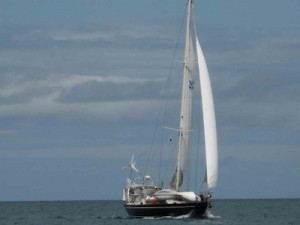
3. Beginning Cruising ... before we left the US to go commuter cruising for six years, we spent a small fortune in things like spare parts (I’ll detail a list of what spares we invested in, what we used and haven’t yet touched in another post), backup systems, how to books, primarily Nigel Calder and Don Casey, charts both paper and electronic, other reference books such as fish identification, stars, fixing the head, etc. We also invested in peripheral equipment such as a hand held depthfinder, dive & snorkel equipment, fishing equipment, both trolling and spearfishing etc. I have no idea the total we spent in this general category, but it was all personal preference. For the most part, this stuff was one time costs and although we may upgrade something occasionally, we do not need to buy new charts or most of this stuff every year.
4. Travel … if your boat is somewhere else, you will have travel costs to get there and return. For example, Chicago to Guatemala City if your boat’s in the Rio Dulce is about $250 – $400 one way. Chicago to Panama City Panama is $500 – $600+ one way. This year, with our boat in Florida, we drove back and forth, which was very inexpensive and allowed us to have wheels at the marina during our refit. In addition to the costs to fly to the boat and return, you need to factor in additional travel required … from Guatemala City to the Rio Dulce is a 5 hour bus or van ride. From Panama City to Shelter Bay, Colon is an expensive taxi ride or a multi-pronged bus/taxi ride. Don’t forget to allow hotel expenses if you decide to stay overnight where you fly into… alot of times the city you fly into may have better provisioning which can be done on your way to the boat if you prefer.
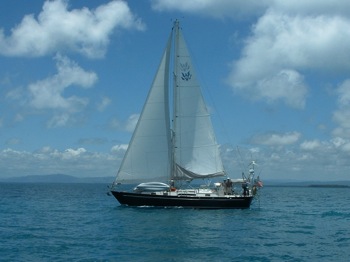
5. Cruising Food … this varies widely by your personal preferences and choice of cruising ground. In the Western Caribbean where there are almost no marinas and widely spaced major ports, our cruising costs were low. We generally spent $1000-$1500 annually on “stock up provisions” — all the stuff that we loaded the boat with to last six months — staples, flour, sugar, beans, canned food, rice, anything we could buy in bulk – there are Costco like places in large provisioning centers in Central America. Coke, beer and wine were included in the annual stock up – we’d load as much as we could aboard. It’s always less expensive and you have more choices when you do major reprovisioning in major ports. Then we’d add on as necessary over the six months. Obviously fresh food was a necessary every couple of weeks and we’d buy what we could when we found it. In general, we found our monthly food expense was usually about half of what we spent at home … keep in mind this did not include the annual stock up. Our low food expense for a month was $136 and the average while cruising was somewhere between $300 – $400 dollars a month. You have to eat and we chose to eat much better than rice and beans every night. We could eat much less expensively.
6. Cruising Entertainment … this probably varies even more than food. We don’t like to eat out, our cockpit generally has a better view and ambiance than any restaurant, so our entertainment budget was very modest. Our big entertainment expenses were always inland touring – we love learning about different cultures and touring inland, which we generally did at the beginning or end of our six months so that the boat was safely tucked away in a marina and we didn’t have to worry about leaving it for a few days at anchor.
7. Cruising Spares … replacing any spares that we might have used during that cruising season … usually this is fairly modest, although when you need to replace an alternator or salt water pump, or smart regulator spare, it can be a bit more pricey. This also includes replacing all the oil filters, fuel filters, impellers, zincs etc that’s a normal part of cruising maintenance.
8. Cruising Misc … checking in & out of countries – we average about $200 a year on this, but next year if we head to the Bahamas, there’s a $300 fee so our costs in the check in/out area will go up. Other miscellaneous fees that can be expensive include restocking our medical kit – we carry several antibiotics, butterfly kits, inhalers, epi-pens, etc. primarily for emergencies, either ours or friends. The objective is to hold us over until we can get to real medical facilities … you can always get medical advice from other cruisers that are doctors on the radio or in person, but if you don’t have any medications, you may be out of luck! I’ll do another post on Cruising and Health/Medical Concerns. Obviously if you have any medications you take regularly, you’ll need to stock up for six months … sometimes this can include dealing with an insurance company that has rules saying you can only buy a month’s supply or whatever, so be sure not to leave this one to the last minute!
Diesel and gasoline are more expensive in other countries, but we generally fill our 70 gallon diesel tanks and two 6 gallon jerry cans once a season. Gasoline varies widely depending on how much we’re running around in the dinghy, primarily to reach farther away snorkeling locations and also how much we have to use the Honda 2000 generator for power rather than rely on the solar and wind power … generally periods of gray no wind days.
Boats with a watermaker will have costs for filters and pickling/unpickling supplies. Boats without a watermaker will have water fillup costs, although these are usually quite modest.
Other costs include refilling propane, generally very inexpensive, we can get several months out of our 20 pound propane container, but we do buy individual propane canisters for our grill — that way if the boat’s propane system is out, I still can cook with either the grill or the microwave (after I empty the bread since the microwave aboard Winterlude is usually the bread box!).
Hopefully this information is useful for your own planning purposes. If you have specific questions, leave a comment or e-mail me from the About page and I’ll try to give you a straight answer. Bon Voyage!
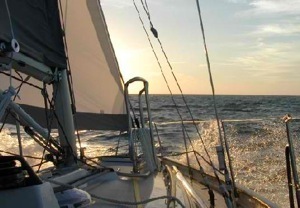










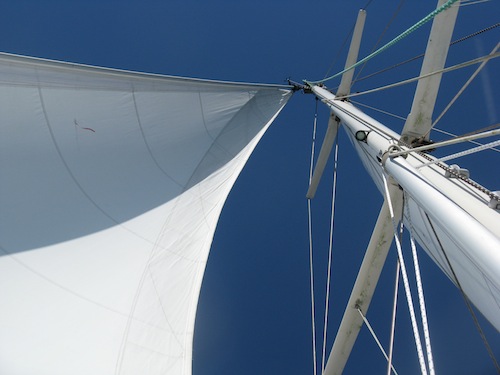
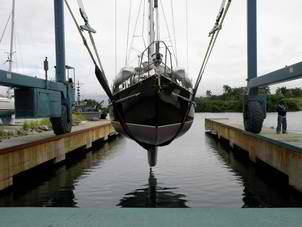
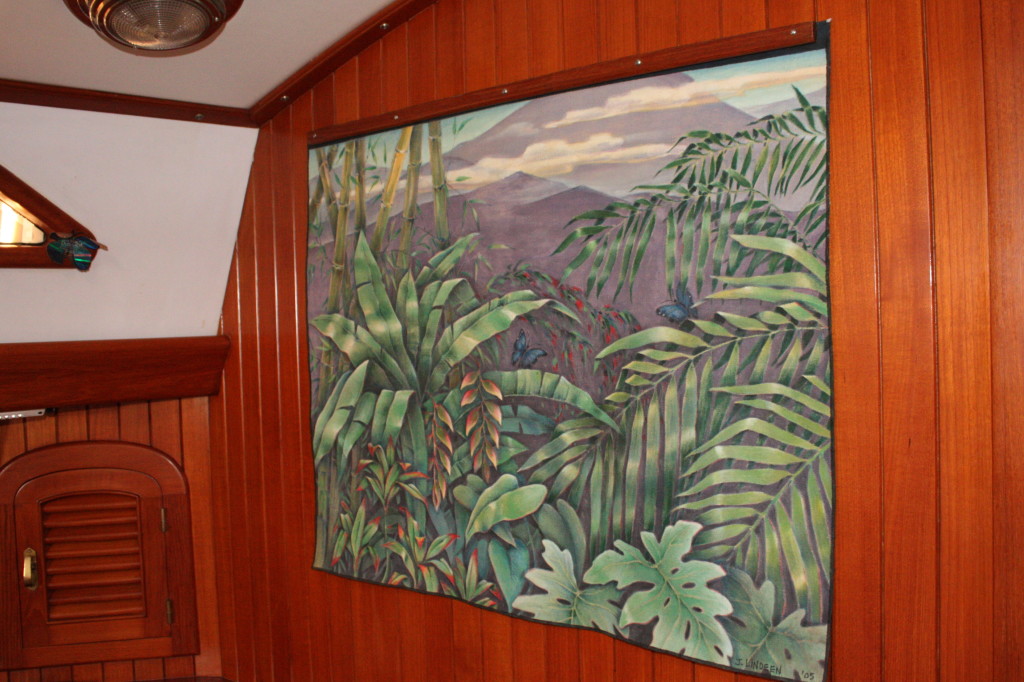
Wow, what great information! Thanks for taking the time to spell it out! Hope to find out on our own end of 2012!